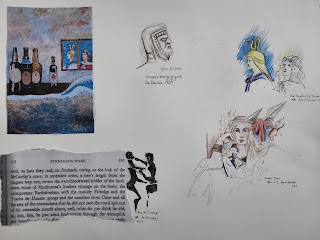Claudius Ptolemy, a Greek mathematician, astronomer, and geographer, created one of the most influential geographical works of antiquity, the "Geographia," around 140 AD. While Ptolemy never visited Ireland himself, he attempted to map the known world of his time using a combination of existing maps, mathematical calculations, and reports from travellers, merchants, and military campaigns.
Ptolemy's depiction of Ireland in the "Geographia"
is based on the information available to him at the time. His map of Ireland
was created using a combination of latitude and longitude coordinates, a grid
system that he developed. Ptolemy's work was influenced by the cartographic
knowledge of his era, which was quite limited compared to modern geographical
understanding.
Ptolemy's map of Ireland in the "Geographia" is
one of the earliest known depictions of the island in a relatively recognizable
form. However, there are significant distortions and inaccuracies in his
representation. Ptolemy placed Ireland too far to the east and made it larger
than it is in reality. This misrepresentation of Ireland's size and position
can be attributed to the limitations of the geographic data available to him
and his reliance on mathematical calculations.
It's important to note that Ptolemy's "Geographia"
was more of a theoretical and mathematical work than a practical and accurate
map of the world. His maps were influential in shaping European cartography for
centuries, and they served as a foundation for later mapmakers to build upon.
Over time, subsequent cartographers and explorers improved the accuracy of maps
through actual exploration and more precise measurements.
In summary, Ptolemy's map of Ireland in his "Geographia" is a representation based on a combination of available geographical knowledge, reports from travellers and traders, and his mathematical calculations. While it was a significant step in the development of cartography, it was not an accurate representation of Ireland's size or position and required later explorers and cartographers to refine the maps of the island.









